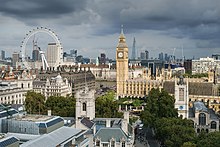
Back Nedersetting Afrikaans مستوطنة Arabic تجمع سكان ARZ Asentamientu AST ГӀумру гьабулеб бакӀ AV Yaşayış məntəqəsi Azerbaijani Населены пункт Byelorussian Населены пункт BE-X-OLD Населено място Bulgarian मानव बस्ती Bihari



| Ekistics |
|---|
 |
|
|

In geography, statistics and archaeology, a settlement, locality or populated place is a community of people living in a particular place. The complexity of a settlement can range from a minuscule number of dwellings grouped together to the largest of cities with surrounding urbanized areas. Settlements may include hamlets, villages, towns and cities. A settlement may have known historical properties such as the date or era in which it was first settled, or first settled by particular people. The process of settlement involves human migration.
In the field of geospatial predictive modeling, settlements are "a city, town, village or other agglomeration of buildings where people live and work".[1]
A settlement conventionally includes its constructed facilities such as roads, enclosures, field systems, boundary banks and ditches, ponds, parks and woodlands, wind and water mills, manor houses, moats and churches.[2]
An unincorporated area is a related designation used in the United States.
- ^ Dutta, Biswanath; Fausto Giunchiglia; Vincenzo Maltese (2010). "A Facet-Based Methodology for Geo-Spatial Modeling". GeoSpatial Semantics: 4th International Conference, GeoS 2011, Brest, France (PDF). p. 143. Archived (PDF) from the original on 2011-09-27. Retrieved 2012-06-06.
- ^ "Medieval Settlement Research Group". Archived from the original on 2012-02-11. Retrieved 2008-04-25.
© MMXXIII Rich X Search. We shall prevail. All rights reserved. Rich X Search